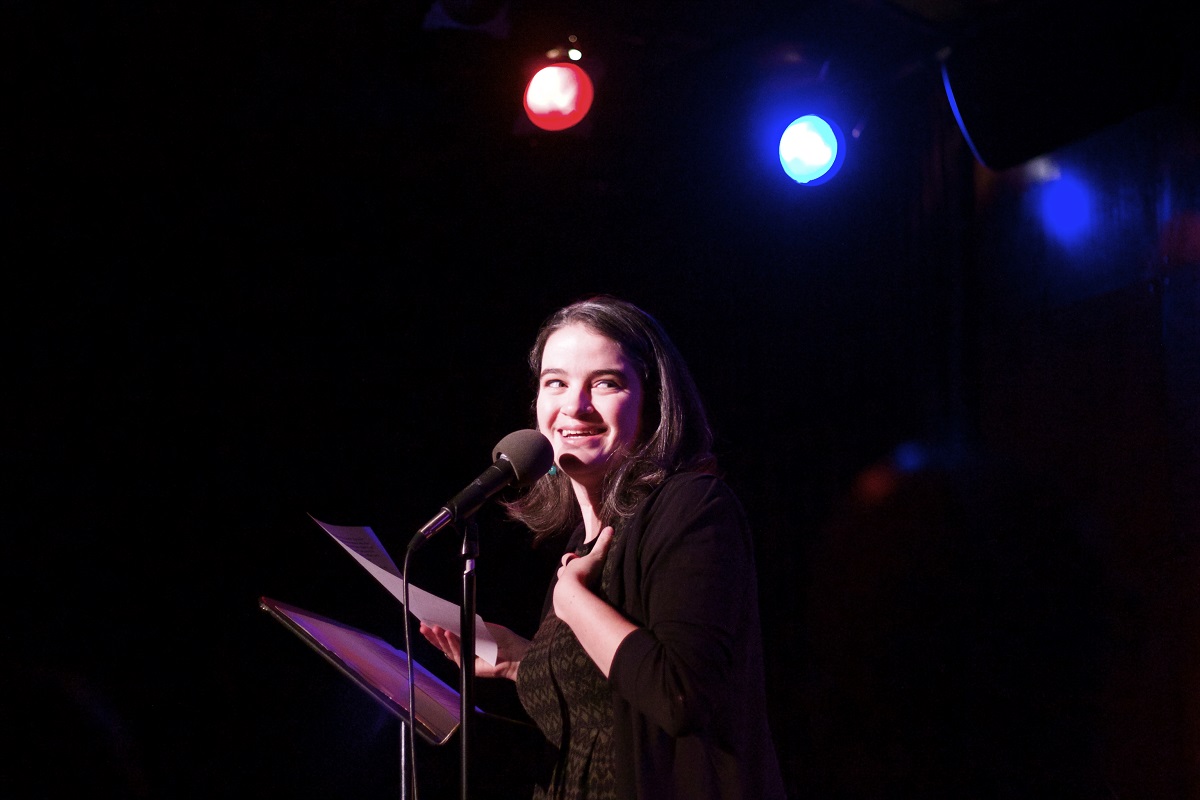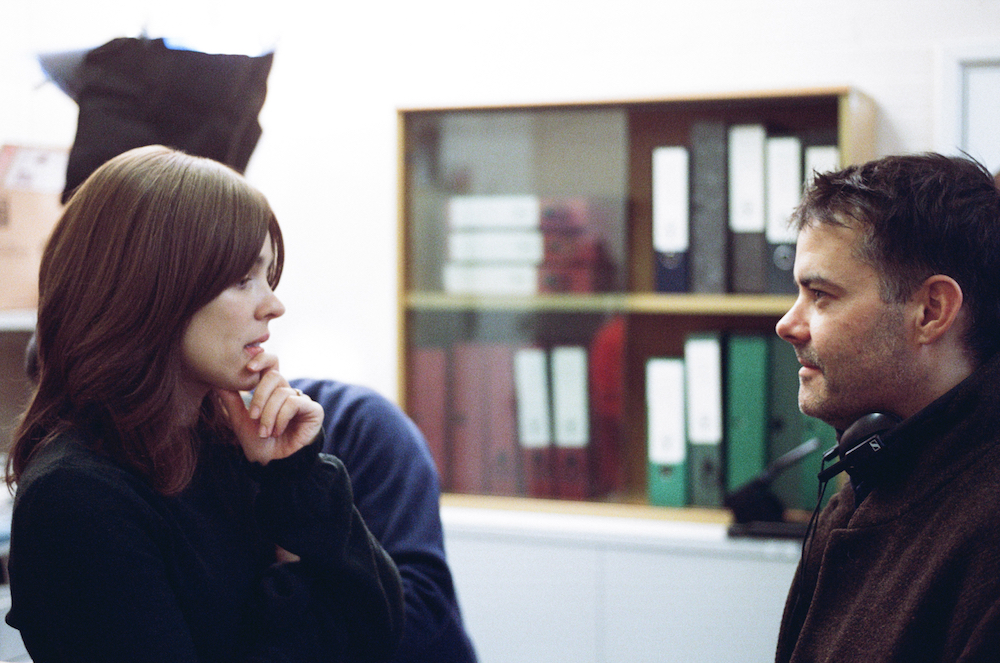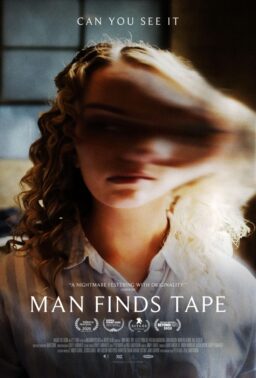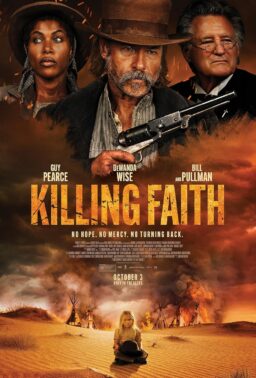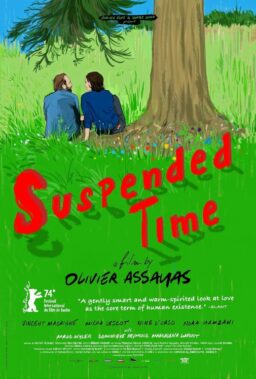Spend a few minutes with Sebastián Lelio, and he’ll make one thing very plain: he loves actors. The Chilean director, whose film “A Fantastic Woman” won the 2018 Academy Award for Best Foreign Language Film, talks about his written work as though it’s simply a stepping-stone to the real art. “It’s like a rocket,” he says of the screenplay for “Disobedience,” co-written with Rebecca Lenkiewicz from the novel of the same name by Naomi Alderman. In his mind, the early work is there to get you to the set, and when other human beings get involved, that’s when the magic really begins.
There’s plenty of magic of that sort at work in “Disobedience,” a character study as three-part fugue, in which Rachel Weisz, Rachel McAdams, and Alessandro Nivola dance around and around each other. Weisz plays Ronit, a woman who left an Orthodox Jewish community, and the friends she had, within it for a less restrictive life in New York. When her father, a highly respected Rabbi, dies, a call from one such old friend draws her back in, and the triangle on which her young life centered reasserts itself. Much of the film centers on the relationship between Ronit and Esti (McAdams), whose romantic entanglement, it’s intimated, led to Ronit’s rejection of her old life. Their connection is particularly affecting, with Weisz and McAdams peeling back layer after layer in increasingly intimate, subtle scenes. In her review of the film, Sheila O’Malley described the effect as “each actress listening closely to the other, paying attention to every nuance. It doesn’t reach the scope of Grand Tragic Romance, but then, it isn’t meant to. These were two women whose normal adolescent crush was banned. In a way, time stopped for the both of them.”
RogerEbert.com spoke with Lelio about “Disobedience,” his work with these performers, the importance of hair in the story and more.
It’s a particularly great time to see a story with such dynamic, complex female characters. When you first encountered the novel, what about it struck you most? What was the thing that immediately grabbed you?
I connected with the three of them, the idea of this very unique and strange love triangle. These people that are united, almost like if they were one collective, multidimensional being. I love that. They felt connected, and destined to go through life together in different configurations. I was attracted to that. They were, very human, confused, making mistakes, trying to do their best, not immediately getting the right answers. These people—vibrating, in flux, changing. I felt connected to them, and [interested in] the fact that it was happening in front of a backdrop that was made of tradition, and more or less fixed conceptions of the world, and of the truth. So that tension between what is fixed and doesn’t change, and is so consistent for thousands of years, and the reality of life, which is pure change and uncertainty—that dynamic, I found fascinating. It sounded like known territory to me, you know? It felt strangely familiar.

That really comes through in the film. One of the things I most appreciated about it is that it feels almost as though the story changes hands. Sometimes it’s Ronit’s story, sometimes it’s Esti’s, sometimes it’s Dovid’s. How did you go about finding that balance, of finding how the ownership would change?
Since the very beginning, I loved the opportunity to create us a structure that had three narrow tube lines. I was coming from making two films [that were] very focused on one [story]—“Gloria” and “A Fantastic Woman.” So it was like, ‘Okay, now I can play with three! It’s going to be great. It’s going to be like a baroque music piece.‘ There’s one, and then other one, and then sometimes they mingle and then the three of them play together and then the third one comes to the front. That way of telling stories is great. And if you look at the film closely, you’ll realize that there’s not one frame where one of them isn’t in the frame. Even if we’re looking at someone that is in front of them, we’re seeing part of their body. So, they are always framed at least one of the three points of the triangle. So it’s really a way of insisting that the spectator ends up feeling [the story] from within their skin. I love to generate that effect.
Well, it really works. It feels incredibly intimate. Not just physically intimate, but their relationships feel so intimate and lived in. How do you go about cultivating that when you’re on a set, when you’re working with actors?
I need to feel trusted, and I need to trust them. So I need the mutual confidence. The contract that we establish is that I will take care of them until the end, and they can be foolish, and they can get lost, and they can explore, and I will take care of them. But I need the daring attitude from them in return.
I’m interested in characters. I love them and I love to write them. In this case, the collaboration with [co-screenwriter] Rebecca Lenkiewicz was amazing. I loved her. But I get to a point where … It’s like a rocket. The characters are the thing that allow you to get to a set, and then you’re dealing with the artist. The human being that is interpreting them. I’m very, very interested in that person—so in this case, in Rachel, and in the other Rachel, who they are, in their bodies, what they carry, their history, their backstory, their energy. So I’m trying to use them as the material, and of course what comes out of that, is something [like an] intersection between the character and who these people really are.
Do you find, in your experience, that the characters you’ve put down on paper change once you began collaborating with a performer?
Always. They change, because I don’t know them yet. I mean, I know the dynamics, and I know what makes the story work, but I don’t know them yet. It’s like expecting a child, you know? You know that it will be there after nine months, and it will be more or less like this or that, but until you have it, that’s kind of like thinking, OK, this is real, this is material. It’s not abstract, it’s not intellectual. It’s very physical. It’s all about the moment. I mean, you have, I don’t know, 33 days to shoot a film and that’s it. To me, the script is the map, it’s never territory. That’s how I understand it.
The point where you feel that you’ve met the character—does that emerge when you first begin working with the actor, or is that something you sort of find together?
I witness the process of the actor finding it. It’s something that I don’t know how to provoke, how to trigger. It’s very organic. It’s a long conversation for months, and then suddenly, Esti’s there. Of course, I feel super lucky that I had the chance to work with such great actors. Rachel Weisz is amazing, instinctive, volcanic, an amazing force of nature. And Rachel McAdams is [very focused], and she read a lot. By some way or another, both of them suddenly were Ronit and Esti and it was like, there was no doubt, they were there. They were there.

I was very taken by the way that Esti’s wig played a role in the storytelling. I’m wondering how much of that you anticipated and how much of it was the result of actually having the physical piece there to work with. When you were sitting down to writer, did you anticipate the wig being such an intimate part of the story?
Yeah. I was fascinated by that because I think the film is, among many things about layers, and who is hiding behind which facade. So Ronit is hiding, Esti is hiding, even Dovid is hiding, and the film, [he smacks his hands together], it just peels out the onion. In that sense the wig and the unflattering costumes are at the same time very concrete and real, and metaphors of these layers under which the characters are somehow hiding. So yeah, I was like, ‘Oh, I can’t wait to film Rachel McAdams taking out her wig for the first time.’ And then while shooting, especially when we were shooting that scene in the wig shop, I suddenly understood that this was a film about hair. Rachel Weisz’s hair is very present and very wild. And then the wig, and the beards, you know? It’s very present.
The two scenes where Ronit is wearing one of the wigs were so striking, because it sort of felt as though it was trespassing in some way, like it was a transgression. But then, when Esti’s wig would come off, that felt like a completely kind of transgression. Were those moments is charged when you were filming them as they come across on screen?
[Ronit] wearing a wig was always a dangerous game, but I think it might be working because she’s so lost, and in this state of mourning. So you kind of accept that as far as part of her rebellious personality and being in that strange state. But then it’s very different when it comes to Esti’s wig, especially when she takes it off in the hotel scene. I think that’s the moment when we really see Esti. It’s like a revelation.
It felt much more intimate than even the removal of clothing.
Of course, yeah.
It’s interesting that it’s death that brings them together. It feels like a story that’s about grief, but it’s not just grief about a person that seems to be grief about a lot of things, and mourning a lot of things.
Oh, that’s interesting! Yes.
Do you see a connection between the kind of vulnerability that, that kind of permanent loss can bring and everything else that develops in the film? Actually, let’s put it this way: If Ronit went home under other circumstances, do you think the story would’ve progressed the way that it does?
No. No … Death is astute as a master. It’s a process that teaches people aspects of themselves. At the same time, in a certain way, in a mythic analysis, it’s like the king has died, and the throne is empty. The world can be turned upside down during those days where, so to speak, no one’s in power. That affects the entire dynamic as well, I would say. Death is operating in different directions I would say. The entire community, somehow, has been really affected by it. The consolidation of a new balances is urgent.

What role did improvisation play in the intimate, casual, world of these character relationships?
There wasn’t too much improvisation. It was mainly an open attitude toward the text. I mean, I was always happy to change anything if it didn’t sound correct or if it sounded untuned. We’re always open to receive ideas and changes things a little bit. Because it’s really on the day [while you’re filming] when you realize if things are really landing well or if they feel “written.” I’m always trying to find ways to make it alive, you know? In that sense it’s about co-creation, more than improvisation. We try to find the solutions sometimes together. So it’s like, Okay, why is this not working? What is it? Why is it sounding funny? … And we keep rolling, and say, ‘Why don’t we try this?’ It’s not like you’re trying to make an acting school on set. Not at all, but it’s keeping it alive and respecting the script, but understanding that nothing is written in stone.
I was so struck by how feminine the love scenes felt. Sometimes if you’re watching a film, particularly if it centers on a relationship between two women, you can tell if the creative force behind it is a man. It feels as though it’s for somebody else’s eyes and someone else’s experience. And that really is not the case here. I’m wondering if there’s any particular way you go about achieving that, or if you have any advice for other filmmakers who are attempting to do the same thing without creating something that feels shallow, or exploitive, or insincere.
I think that maybe when that I’m working, I’m not operating from a place of having a strategy … Let me start again. What I’m applying in that scene is exactly the same morale that I’m applying in the entire film. I’m interested in them. In what they are living. I am interested in the actresses, the women behind the characters. That’s all. That authorizes me to be there with them, and probably prevents me from falling in the trap of getting away from them, and making them do things for me. I’m the one doing things for them. That’s it. That’s the whole thing.
It sounds really simple when you put it that way.
Yes! It’s not too complicated, when you manage the place from which you’re operating.
